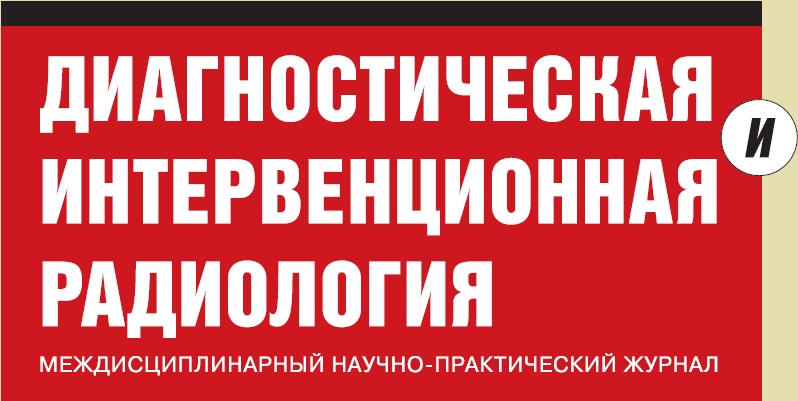Аннотация: Чреспеченочное эндобилиарное стентирование с января 2003-го по январь 2008 года было выполнено 62 пациентам с механической желтухой, обусловленной высокими послеоперационными стриктурами гепатикохоледоха злокачественного генеза. 49 (79%) больным эндобилиарные стенты имплантированы в 2 этапа после предшествующего дренирования желчных протоков, 13 (21%) пациентам - одномоментно. В 60 (96,8%) случаях стентированию предшествовала баллонная дилатация желчных протоков. У 59 (95,2%) больных чреспеченочное вмешательство завершено контрольным дренированием. Длительность госпитализации при эндобилиарном стентировании составила от 12,7 до 22,3 дня (в среднем - 17,5 дня). В 8 (12,9%) наблюдениях отмечен летальный исход. Продолжительность жизни больных в постимплантационном периоде - в среднем 9,7 месяца. У 5 (8,1%) пациентов отмечен рецидив механической желтухи, потребовавший госпитализации и повторных чреспеченочных эндобилиарных вмешательств. Была выявлена прямая зависимость эффективности чреспеченочного стентирования от технических характеристик различных металлических эндобилиарных протезов, параметров стриктуры желчных протоков, методики и тактики чреспеченочного вмешательства. Одномоментное эндобилиарное стентирование без предшествующего чреспеченочного дренирования уменьшает количество ассоциированных осложнений, улучшает качество жизни на госпитальном этапе и увеличивает ее продолжительность в отдаленном периоде, а также уменьшает сроки госпитализации больных и общую стоимость лечения. Предварительная баллонная дилатация злокачественных и послеоперационных билиарных стриктур - обязательный этап чреспеченочного вмешательства, особенно при имплантации саморасширяющихся стентов в извитые отделы желчных протоков. Отказаться от постимплантационного контрольного дренирования можно при сочетании таких факторов, как отсутствие признаков отека стенки гепатикохоледоха или пролабирования в него опухолевой ткани, гемобилии, а также при полном открытии металлической конструкции стента и свободном поступлении контрастного вещества в кишечный тракт. Список литературы: 1. Wiechel К. Percutaneous transhepatic cholangiography: technique and application withstudies of the hepatic venous and biliary ductpressures, the chemical changes in blood andbile and clinical results in a series of jaundicedpatients. Acta Chir Scand Suppl. 1964; 330(11): 1-99. 2. Fern6ndez-Aguilar J., Santoyo J., Su6rezMuсoz M. et al. Biliary reconstruction in livertransplantation: is a biliary tutor necessary. Cir Esp. 2007; 82 (6): 338-340. 3. Kasahara M., Egawa H., Takada Y. et al. Biliaryreconstruction in right lobe living-donor livertransplantation: Comparison of differenttechniques in 321 recipients. Annals of Surgery. 2006; 243 (4): 559-566. 4. Alsharabi A., Zieniewicz K., Patkowski W. et al.Assessment of early biliary complications afterorthotopic liver transplantation and their relationship to the technique of biliary reconstruction. Transplantation proceedings. 2006; 38 (1): 244-246. 5. Bahra M., Jacob D. Surgical palliation ofadvanced pancreatic cancer. Recent. Results. Cancer. Res. 2008; 177: 111-120. 6. Das A., Sivak M.J. Endoscopic palliation forinoperable pancreatic cancer. Cancer. Control.2000; 7 (5): 452-457. 7. Maire E, Hammel P., Ponsot P. et al. Long-term outcome of biliary and duodenal stents in palliative treatment of patients with unresectable adenocarcinoma of the head of pancreas. Am J Gastroenterol. 2006; 101 (4):735-742. 8. Katsinelos P., Paikos D., Kountouras J. et al. Tannenbaum and metal stents in the palliative treatment of malignant distal bile duct obstruction: a comparative study of patency and cost effectiveness. SurgicalEndoscopy. 2006; 20 (10): 1587-1593. 9. Hatzidakis A., Tsetis D., Chrysou E. et al. Nitinol stents for palliative treatment of malignant obstructive jaundice: Should we stent the sphincter of oddi in every case? Cardiovasc. Intervent. Radiol. 2001; 24: 245-248. 10. Kaassis M., Boyer J., Dumas R. et al. Plastic or metal stents for malignant stricture of the common bile duct? Results of a randomized prospective study. Gastrointest Endosc. 2003; 57: 178-182. 11. Ikeda S., Maeshiro K. Interventional treat ment of biliary stricture. Nippon. Geka. Gakkai. Zasshi. 2004; 105 (6): 374-379. 12. Brountzos E., Ptochis N., Panagiotou I. et al. A survival analysis of patients with malignant biliary strictures treated by percutaneous metallic stenting. Cardiovasc. Intervent. Radiol. 2007; 30(1): 66-73. 13. Nakamura T., Hirai R., Kitagawa M. et al. Treatment of Common Bile Duct Obstruction by Pancreatic Cancer Using Various Stents: Single-Center Experience. Cardiovasc. Intervent. Radiol. 2002; 25: 373-380. 14. Tesdal I., Roeren T., Weiss С et al. Metallic stents for treatment of benign biliary obstruction: a long-term study comparing different stents. J. Vasc. Interv. Radiol. 2005; 16 (11): 1479-1487. 15. Oikarinen H., Leinonen S., Karttunen A. et al. Patency and complications of percutaneously inserted metallic stents in malignant biliary obstruction.J. Vasc. Intervent. Radiol. 1999; 10: 1387-1393. 16. Yoshida H., Taniai N., Mamada Y. et al. One-step palliative treatment method for obstructive jaundice caused by unresectable malignancies by percutaneous transhepatic insertion of an expandable metallic stent. J. World. J. Gastroenterol. 2006; 21; 12 (15): 2423-2426. 17. Cowling M., Adam A. Internal stenting in malignant biliary obstruction. World. J. Surg. 2001; 25: 355-361. 18. Isayama H., Komatsu Y., Tsujino T. et al. Polyurethane-covered metal stent for management of distal malignant biliary obstruction. Gastrointest. Endosc. 2002; 55 (3): 366-370. 19. Yoon W., Lee J., Lee K. et al. A comparison of covered and uncovered Wallstents for the management of distal malignant biliary obstruction. Gastrointest. Endosc. 2006; 63 (7): 996-1000. 20. Chen J., Sun C, Liao C, Chua C. Self-expandable metallic stents for malignant biliary obstruction: efficacy on proximal and distal tumors.J. World. J. Gastroenterol. 2006; 7; 12 (1): 119-122. 21. Inal M., Aksungur E., Akgьl E. et al. Percutaneous Placement of Metallic Stents in Malignant Biliary Obstruction: One-Stage or Two-Stage Procedure? Pre-Dilate or Not? Cardiovasc. Intervent. Radiol. 2003; 26: 40-45.

Сайт предназначен для врачей







